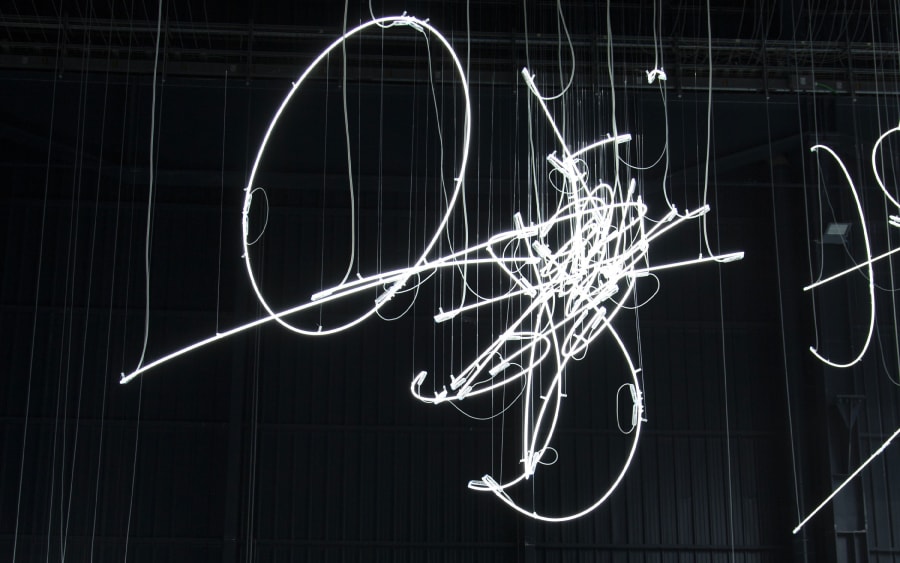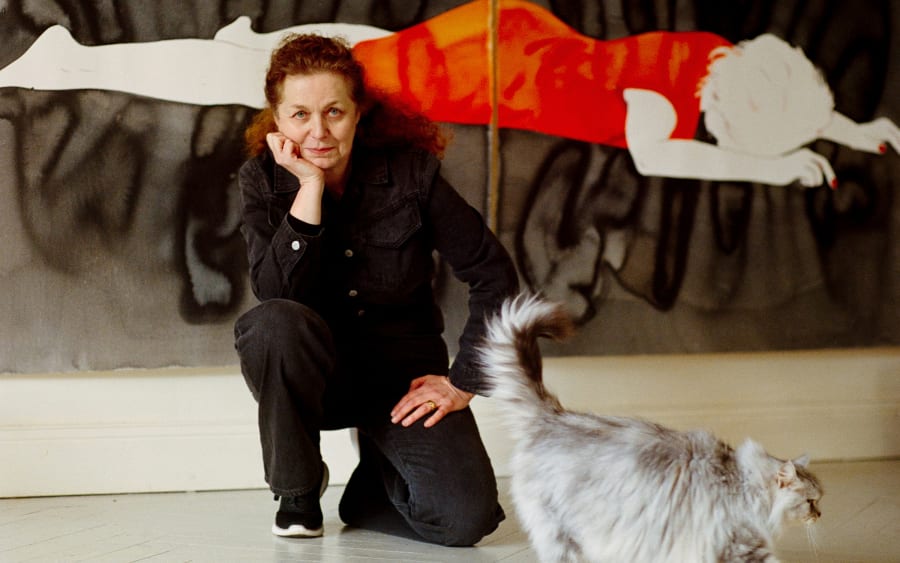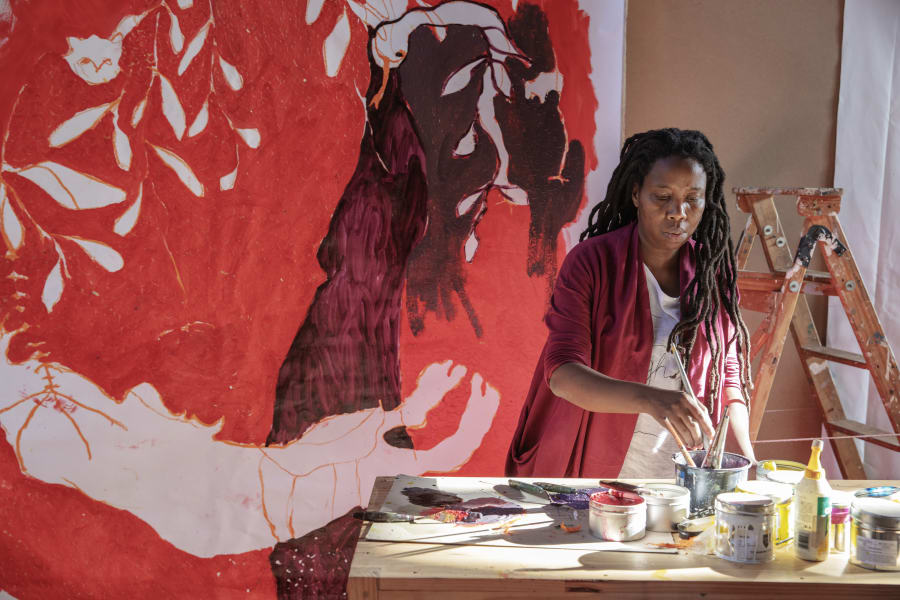In collaboration with Numéro art
For nearly 50 years, James Turrell has been working on a sky observatory nestled in a 400,000-year-old extinct volcano in northern Arizona. Acquired by the American artist in 1977, the Roden Crater and the surrounding site have been transformed over the course of this ambitious project, which features luminous tunnels and galleries that open to the sky and are bathed in light.
About 20 underground spaces are woven into the architecture of this exceptional domain, drawing inspiration from the Mayan pyramids of Central America and also the history of the Hopi, the Native American inhabitants of the region. Although still closed to the public, the site represents the culmination of a life’s work for the artist, who was born in 1943. Here, nature, architecture, and light combine to create a unique sensory experience; something akin to the total artwork so idealized by the Romantics.
‘You know that friend who’s been working on their thesis forever, saying they’re going to finish it, but never does? For me, the Roden Crater is kind of like that,’ the artist jokes, before explaining that the pandemic, inflation, and increasing production costs have significantly extended his timeline. Talking from his studio in the nearby city of Flagstaff, Turrell appears in front of an enormous photograph of the volcano, as if a window had been opened to reveal this panoramic view, with a rainbow forming a surprising halo around the 81-year-old artist.
The fortuitous image is eloquent: James Turrell now ranks among the legends of contemporary art, not only thanks to this long-term project but through the creation of a radical and innovative body of work based on the immaterial. Now, the artist, nicknamed the ‘master of light,’ presents a major solo exhibition at Gagosian, which has entrusted him with the keys to its Le Bourget space, just a stone’s throw from the airport on the outskirts of Paris.
The Los Angeles native became known to the public in the mid 1960s. One of his first works, Afrum-Proto (1966), consisted simply of the projection of white light onto the corner formed by two walls. The hexagonal shape drawn by the dazzling light gave the illusion of a cube emerging in relief from the wall. The foundations had been laid; for Turrell, an artwork emerges from the interplay between space, light, and color, which disrupts the viewer’s perception through the careful study of physical phenomena. These principles aligned with the characteristics of the new Light and Space movement, from which James Turrell emerged as one of the leading figures alongside Larry Bell and Robert Irwin.
‘My work has no object, no image, and no focus,’ Turrell summarized a few years ago. This is particularly evident in his series of ‘Ganzfeld’ works, which he began in 1976, based on the eponymous effect that occurs when exposure to a uniform, featureless field triggers a state of sensory deprivation. Designed on a human scale, Turrell’s installations immerse the viewer in a monochromatic bath – red, pink, blue, or green – where the color, saturated and unified, is of such intensity that it engulfs them.
Visitors to the Gagosian exhibition are welcomed by one of the artist’s latest ‘Ganzfeld’ works. In this pavilion with its bare, curved walls, an LED screen and colored lights do all the work. Despite its structure, the artist considers this work much more pictorial than sculptural, as it recreates, in a three-dimensional space, a purely two-dimensional impression of flatness. ‘We have lost the habit of entering paintings, and I want my pieces to revive this experience,’ explains the artist, for whom the aura of an artwork is essential. An aura, he says, that he finds in the paintings of Vermeer, Goya, Turner, and the Impressionists, precisely because their mastery of light.
Turrell’s art would probably have never seen the light of day without his consuming passion for aviation. The son of an aeronautical engineer, the young man had his eyes fixed on the sky from an early age, dreaming of traversing it. He obtained his pilot’s license at just 16 years old and began flying. ‘I remember flying one day in the middle of the tule fog, a very low thick fog specific to California. There was a stratus cloud above, and the sun was about to rise, which plunged the sky into a red that became orange, then yellow. Moving through this completely abstract landscape was striking.’
This journey would inspire his ‘Wedgework’ series, started in 1969, of which a recent example is on display at Gagosian. Through the projection of fluorescent-colored lights onto reflective surfaces in a room, Turrell generates an impression of depth that extends beyond the walls. He also draws on his passion for the celestial world in his most popular works, the ‘Skyspaces’; outdoor capsules that can accommodate anything from a handful of people to several dozen. Thanks to an opening in the roof to admire the sky, and the meeting of natural and artificial light inside, visitors can abandon themselves to moments of intense contemplation. Nestled beneath the volcano’s surface and its cone of ash, the Roden Crater contains several of these ‘Skyspaces’.
For more than 40 years, the Roden Crater project’s progress has been traced through numerous plans, photographs, holograms, and models; all considered artworks in their own right. In these objects, some of which are presented in the Gagosian exhibition, what shines through above all is the artist’s love for Arizona’s landscape. ‘Like Georgia O’Keeffe and Agnes Martin, two of my art heroines, I found my source in the Southwest desert. That’s why I try to go on walks every day.’ Beyond his daily walks, the artist still flies regularly, even at 81 years old. ‘As long as my insurance allows me to,’ he adds, with a mischievous smile.
Today, Turrell works daily with two architects and visits the Roden Crater site almost every day. His wife handles financial aspects, and together they manage the vast ranch on site, whose profits help fund the project. Production of the artworks is delegated to specialized contractors, depending on where they will be presented; French manufacturers worked on the Gagosian exhibition, for example. This well-oiled machine allows the artist to remain productive and visible internationally, ensuring his longevity.
Turrell remains evasive about the public opening date of the Roden Crater, originally scheduled for 2024, continuing to maintain the myth and pique curiosity. One question remains: how does one maintain the same course for so long, without becoming discouraged by such a pharaonic project and the numerous difficulties it entails? ‘Deep down, we don’t change, we just reveal ourselves gradually,’ responds the artist, implicitly reminding us how the journey prevails over the destination. ‘The more time passes, the more we learn about ourselves.’ This rather Socratic philosophy aligns with the thinking of one of his greatest literary role models, the writer and aviator Antoine de Saint-Exupéry: ‘The earth teaches us more about ourselves than all the books in the world because it resists us. Man discovers himself when he measures himself against an obstacle.’
This article is part of an ongoing editorial collaboration with Numéro Art. You can read the original article here.
‘James Turrell: At One’
Gagosian, Le Bourget
Until summer 2025
James Turrell is represented by Gagosian (New York, Basel, London, Hong Kong, Paris, Rome), Almine Rech (Paris, Brussels, London, New York, Shanghai), and Pace Gallery (New York, Geneva, Hong Kong, London, Los Angeles, Seoul).
Matthieu Jacquet is a journalist and art critic writing for Numéro, Numéro art and Geste/s.
English translation: Art Basel.
Caption for header image: James Turrell, Aftershock, 2022, Ganzfeld series (1976 - ongoing). © ART James Turrell. Photo: Florian Holzher.
Published on January 30, 2025.


